|
Just a few miles from Bamburgh Castle in Northeast England, lies the Bradford Kaims: a once major marshland inhabited by humans from the Mesolithic to Late Bronze Age. The Bamburgh Research Project (BRP) began investigating the Kaims back in 2009, and discovered some exciting material from burnt mounds. First, an extensive timber platform which is thought to be an access-way to open water (more on that here). Second, a few stone-lined troughs were excavated. Given the proximity the troughs were to open water, it is possible these early inhabitants were using the troughs to boil water (via stones), hinting at the possibility of brewing. Experimental Brewing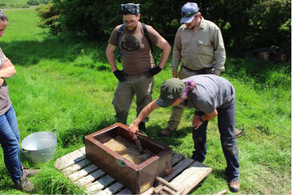 Experimental beer brewing Experimental beer brewing Recently, the BRP ran an experimental brewing course to see whether brewing could be possible using these similar technologies found at the Bradford Kaims. I reached out to supervisor Rebecca Brummet, a veteran field archaeologist with the BRP, who was kind enough to answer a few questions so I could learn more about this project. How did you get interested in Archaeology, and what brought you to the BRP?I have always been interested in Archaeology, but didn't pursue it as a career until I started University in the U.S. I am mainly interested in prehistoric northern Europe, specifically the British Isles, so when I did research on Field Schools as part of my degree requirements, I came across the Bamburgh Research Project, specifically the Bradford Kaims Project and decided I wanted to learn here. How important is this plank structure found on site?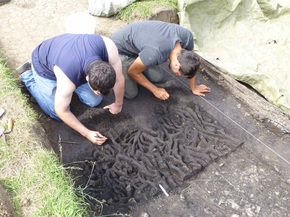 Excavation of the timber platform Excavation of the timber platform According to Tom Gardner, Project Officer of the Bradford Kaims, "we believe it to be very important, possibly of international importance". Further work will need to be done to determine its relationship to the Burnt Mounds found on site. Have you brewed before?Our project has been brewing for three field seasons so far and have had success with barley in the past, so we continued to use it this year. I was a part of the beer brewing experiments last season and took on the mantle of Director this season to continue brewing beer and conduct other types of recreation processes in an attempt to understand how early humans used the resources around them. As I understand it, the area has some modest evidence for human occupation in the late Mesolithic and early Neolithic, but no firm evidence of use til around the Bronze Age?Correct. Is it safe to say that those living in the area were planting oats and wheat as suggested by the pollen record?Per the public report, Bradford Kaims Wetland Heritage Project-Archaeological Report, "Firmer evidence for anthropogenic activity begins...with the first appearance of pollen from the Avena-Triticum group of cultivated cereal. Initial human activity does not appear to be within the immediate area. A more local presence only becomes likely in EB3a and above. Even then major changes to the vegetation caused by human activity are not supported by the evidence at Embleton within the centuries covered by the current pollen core." Were there any signs of barley use or brewing? If there were no signs of barley, was there a reason you opted for a barley beer, rather than an oat/wheat mixture? Grinding barley Grinding barley We don't have specific evidence at the site for barley use for beer brewing. The reason we used barley was because we were able to procure it from a local supplier. Beer brewing is quite fun and easy and our students often enjoy taking part in the processes and tasting the outcome. To be fair, we wouldn't win any awards for the taste of the beer, but it provides us a glimpse into the life of early humans and an interesting experience for our students. It is often stated that brewing alcoholic beverages in the neolithic would more likely be a mix of fermentable sugars (honey, grape juice, barley etc). So the resultant beverage is more like a grog, rather than a modern beer. Would there be access to other fermentable sugars other than grains?Honey would be found locally, but we don't have any indication of honey being used or for beer brewing taking place at the site. What role do you think brewing and beer would play in early societies?Personally, I think that brewing beer from grains allows multiple uses of the same resources, something early societies would have wanted considering the limited access to resources on a year round basis. Last season we used our leftover mash to pat into little unleavened barley cakes and bake on a large hot stone in the fire. This year we used some flour from the barley, mixed with an oil procured from sedge at our site to create more unleavened barley cakes. While not exactly the most palatable, they were edible, so I could imagine that with a little imagination and the addition of local herbs and spices, you could make something more palatable. I also think that beer brewing brings people together. One person could make beer, but it's easier, takes less time and is more fun with a group of people helping you out. We had a group starting the fire, another group gathering elderflowers and another breaking the barley husks. It's a community effort and it's quite enjoyable drinking the fruits of your labor after the fermentation process takes place. Switching gears to more brewing related questions - It's my understanding that unmalted barley was used in the first season batch and I believe we used it in one of our batches last season so we wanted to replicate our experiment to see if it would work again. Why separate the wort from the grain (i.e. lauter)? It is what modern brewing tells us to do, but would it necessarily been done in Neolithic times?What are you hoping to learn from experiments like this?Since this was not a scientific experiment with controls put in place, we were more or less just having a go at beer brewing to see how difficult it may be and to give our students a fun, hands on experience as part of the learning process. We have many burnt mounds at the Bradford Kaims, so we know that early human groups used that area over a long period of time to heat up stones, presumably for heating up water. One of the uses of heated water includes brewing beer, so we thought we would try it out. We have not found any indication in our troughs that beer brewing was in practice at the site though. All the best and cheers! I think the statement “[beer brewing] provides us a glimpse into the life of early humans and an interesting experience for our students” perfectly sums up why this effort by the Bradford Kaims team is simply awesome.
0 Comments
This is probably Aldobrandino de Siene's claim to fame, as it is a frequently reproduced image from a 13th century illuminated text. Le Régime du corpsThe Le Régime du corps (Regular Care of the Body) is Aldobrandino’s 13th-century text covering all aspects of health (preserving health, care for different parts of the body, diet, and physiognomy [judging someone’s character from facial appearances]). In it, he describes some ailments caused by drinking beer. Whether it is beer brewed from oats, wheat or barley (or a mixture thereof), it harms the head and stomach, gives you bad breath, hurts your teeth, and fills the head with bad fumes (that one may be true). Given that Aldobrandino was Italian (and wrote in French) I would venture to guess there was a strong wine bias here towards beer. In any case, if one must drink a beer, that which is brewed from rye (or rye bread) with mint and wild celery is best. This sounds very interesting. Ingredients
As with most research, I am left with more questions than answers. Would love to know whether rye beers such as this were common, and how it fits into the gruit scene of Medieval Europe. I’m a fan of rye beers, and honestly, I could see a mint / celery combination being pretty tasty, albeit a hard one to nail down. I really need to get my home brewery up and running, so I can give this a try. ResourcesAdamson, Melitta Weiss. Food in medieval times. Greenwood Publishing Group, 2004.
Scully, D. Eleanor, and Terence Scully. Early French cookery: sources, history, original recipes and modern adaptations. University of Michigan Press, 2002. |
Jordan RexBeer archaeologist Archives
November 2017
Categories
All
|
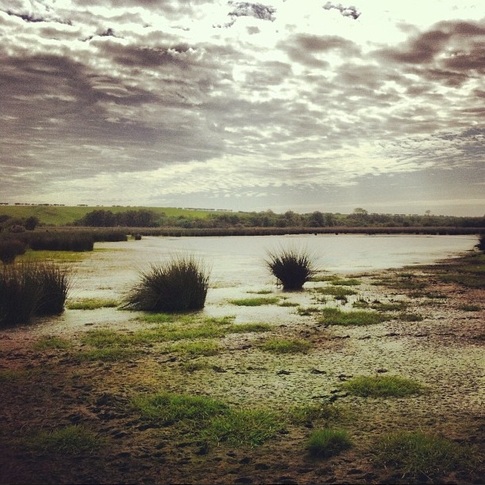
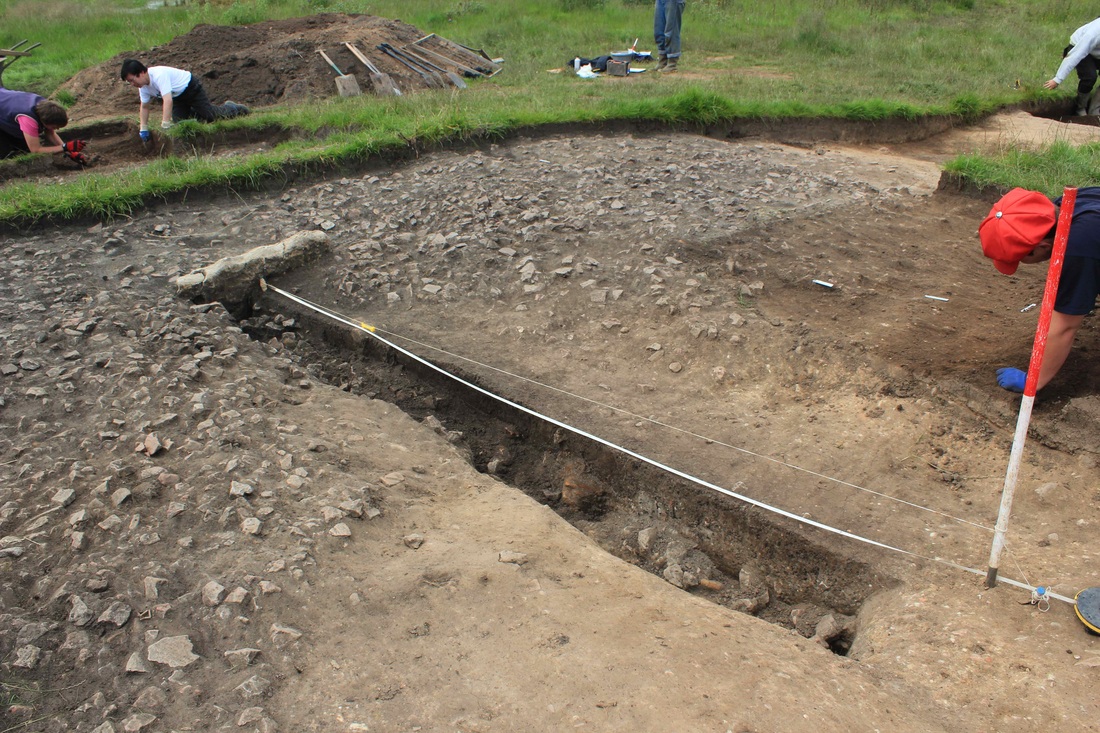
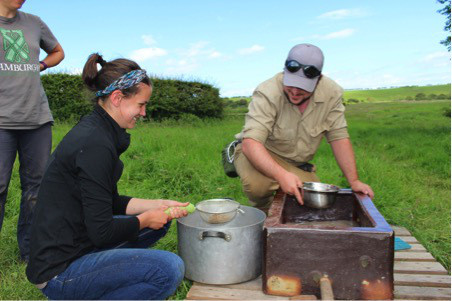
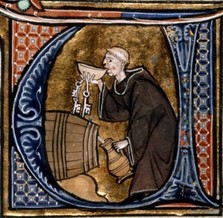
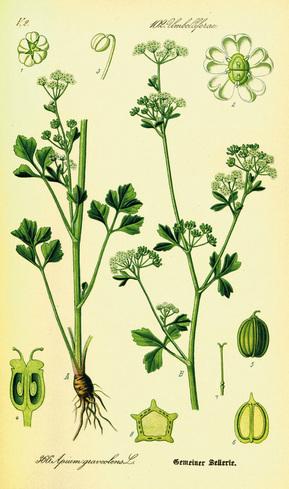
 RSS Feed
RSS Feed
